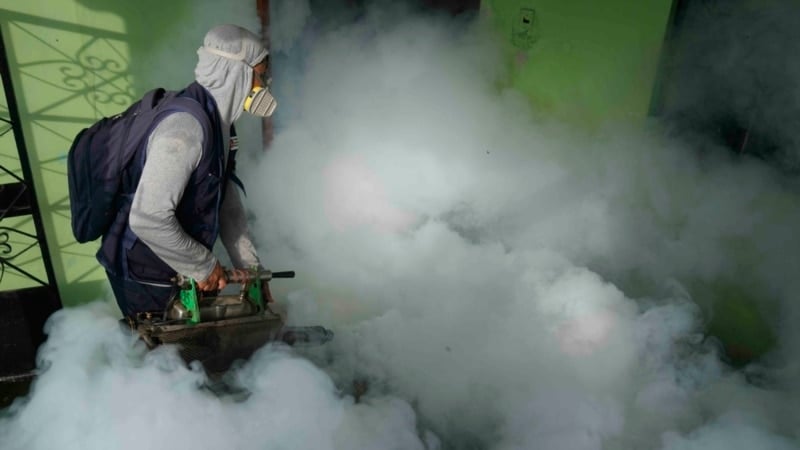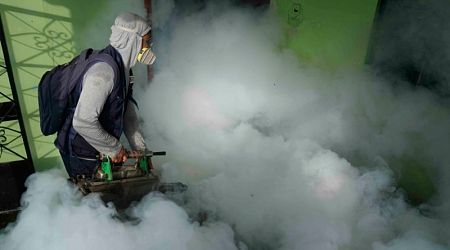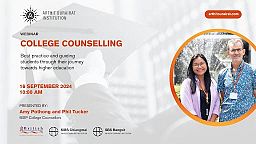International
WHO launches plan to tackle growing threat of dengue, other diseases
GENEVA — The World Health Organization launched a global plan Thursday to address the growing threat of dengue and other deadly arboviruses, which have affected millions of people around the world and put billions more at risk. “The rapid spread

“The rapid spread of dengue and other arboviral diseases in recent years is an alarming trend that demands a coordinated response across sectors and across borders,” said WHO Director-General Dr. Tedros Adhanom Ghebreyesus.
An arbovirus is a virus that is transmitted to humans by mosquitoes, ticks, or other arthropods, such as crustaceans, insects and arachnids.
Dengue has emerged as the most problematic arbovirus disease. The WHO notes the number of cases has nearly doubled each year since 2021, with over 12.3 million cases at the end of August of this year, including more than 6,000 deaths.
The WHO aims to “turn the tide” against dengue and arboviral diseases, Tedros said, noting that the measures in the proposal could “protect vulnerable populations and pave the way for a healthier future.”
The WHO chief said everyone has a role to play in the fight against dengue, “from maintaining clean environments to supporting vector control and seeking and providing timely medical care.”
“Factors such as unplanned urbanization and poor water, sanitation and hygiene practices, climate change and international travel, are facilitating the rapid geographical spread of dengue,” Dr. Raman Velayudhan, WHO unit head, global program on control of neglected tropical diseases, told journalists in Geneva Tuesday, in advance of the plan’s launch.
“The disease is now endemic in more than 130 countries,” he said. “Similar trends are also observed for other arboviral diseases, such as Zika, chikungunya, and more recently, the Oropouche virus disease, especially in the Americas.”
Dengue is endemic in tropical and subtropical climates, particularly in Southeast Asia, the Western Pacific and the Americas. The WHO says the majority of dengue cases, as well as several other arboviruses, have been reported from the American region this year.
WHO officials say the situation is also of concern in Africa, “where countries are battling multiple diseases amid conflict and natural disasters,” placing additional strain on already fragile health systems.
The Africa CDC reports more than 15,000 cases of dengue have been recorded in 13 African countries this year.
“This global escalation underscores the urgent need for a robust strategy to mitigate risks and safeguard populations taking into account that urban centers are at greater risk,” Velayudhan said.
Dengue is a viral infection that spreads from mosquitoes to people. Most people who get dengue get better in one to two weeks. However, some people who develop severe cases can die.
According to the WHO, prevention is the best protection from dengue. It recommends people avoid mosquito bites, especially during the day, “by covering up.”
Chikungunya, a virus spread by Aedes mosquitoes, has been reported in 118 countries, with the highest circulation found in Brazil.
Dr. Diana Rojas Alvarez, team lead on arboviruses, epidemic and pandemic preparedness and prevention at the WHO, notes newborns, elderly and people with pre-existing conditions “have been identified as a risk factor for poor disease outcome.”
Besides chikungunya, she said Zika and Oropouche, which are spreading widely in the Americas, have symptoms similar to dengue and “can be easily misdiagnosed in areas with co-circulation of multiple arboviruses.”
To avoid misidentifying those diseases, she said it is critical for countries to strengthen their detection, surveillance, and testing activities and “to make sure populations know which measures to take to protect themselves and their communities.”
The World Health Organization says the global escalation of arboviral diseases underscores the urgent need for “a robust strategy to mitigate risks and safeguard populations.”
It urges governments to implement five components of its strategic global plan: Emergency coordination activities, collaborative detection and surveillance, community protection and prevention measures, safe and scalable care to prevent illness and death, and access to countermeasures, such as the promotion of research for improved treatments and vaccines.
The WHO estimates $55 million will be required to put the plan into action over the next year.


































